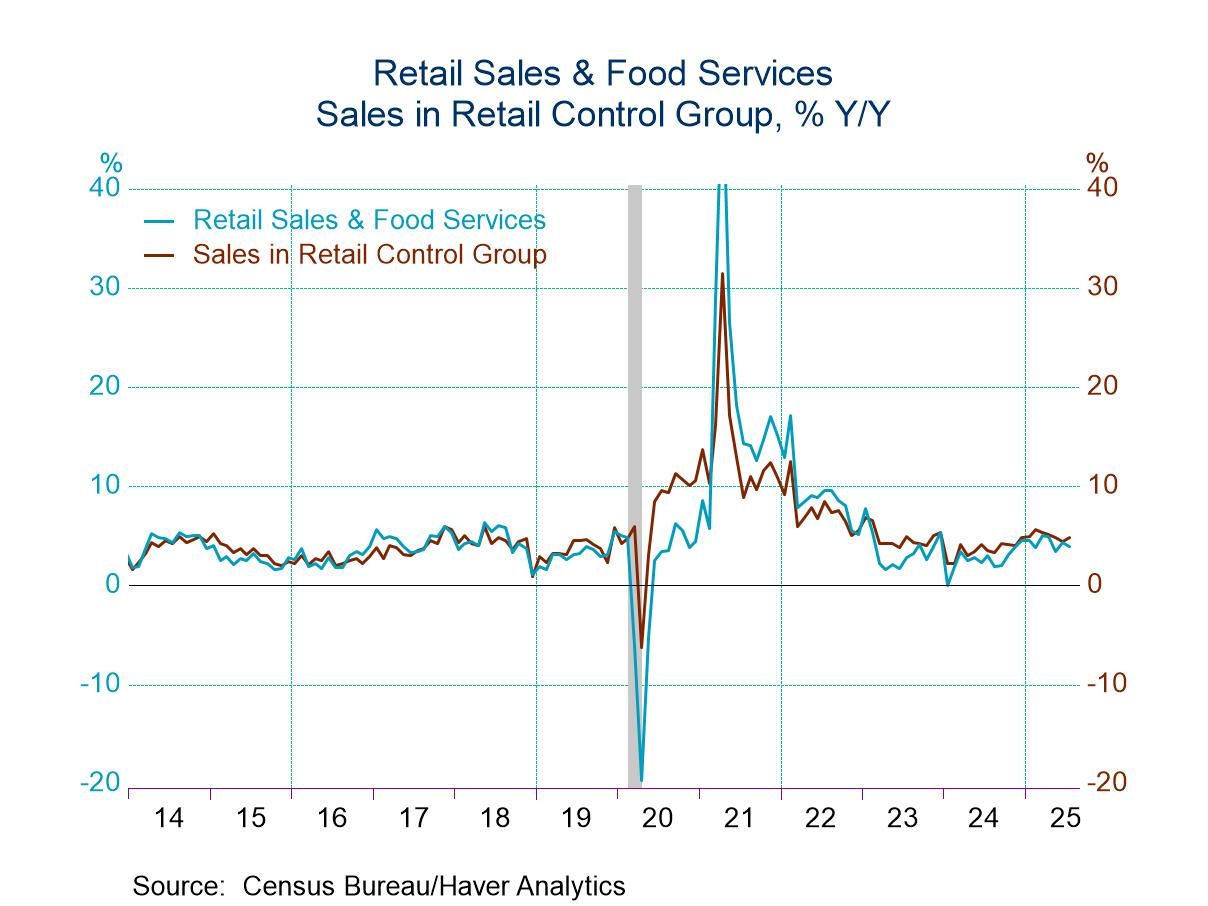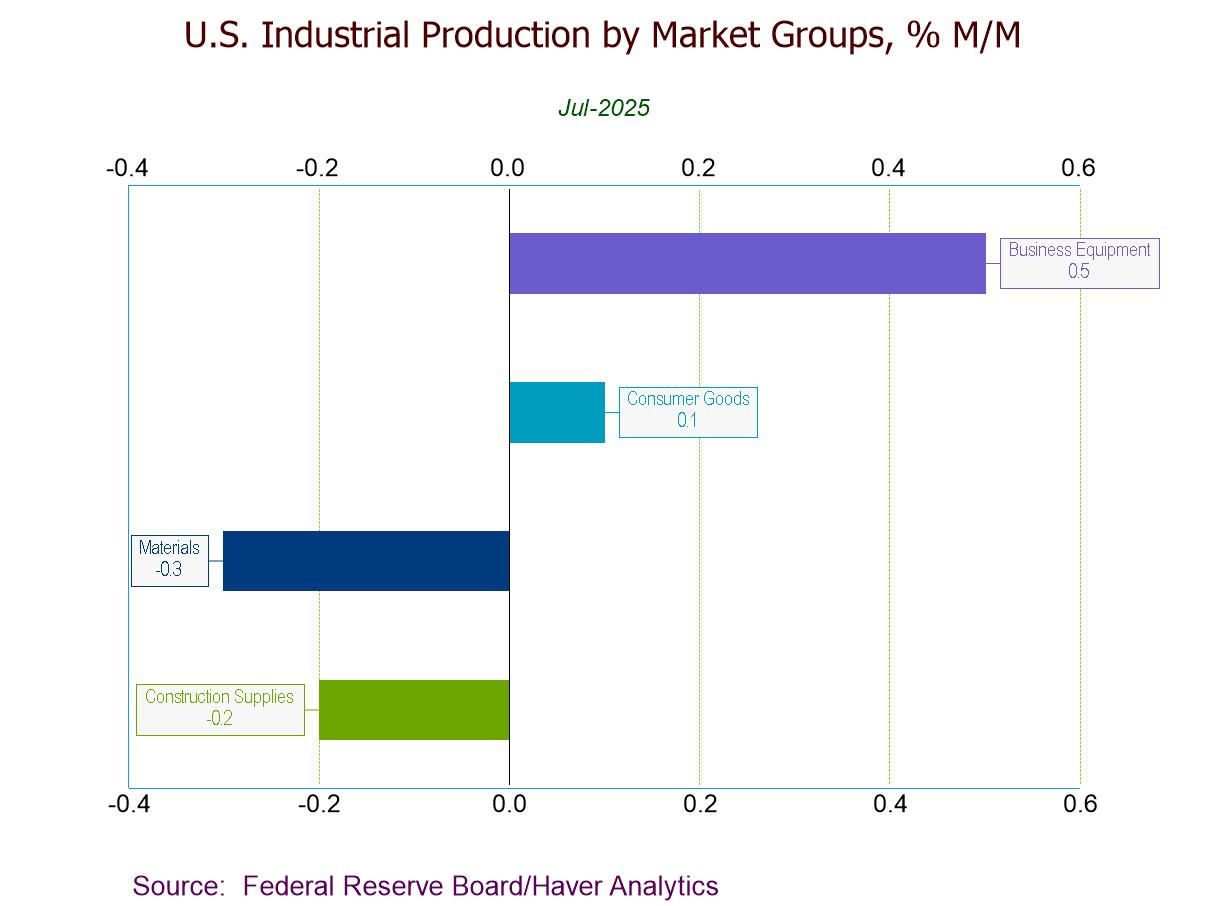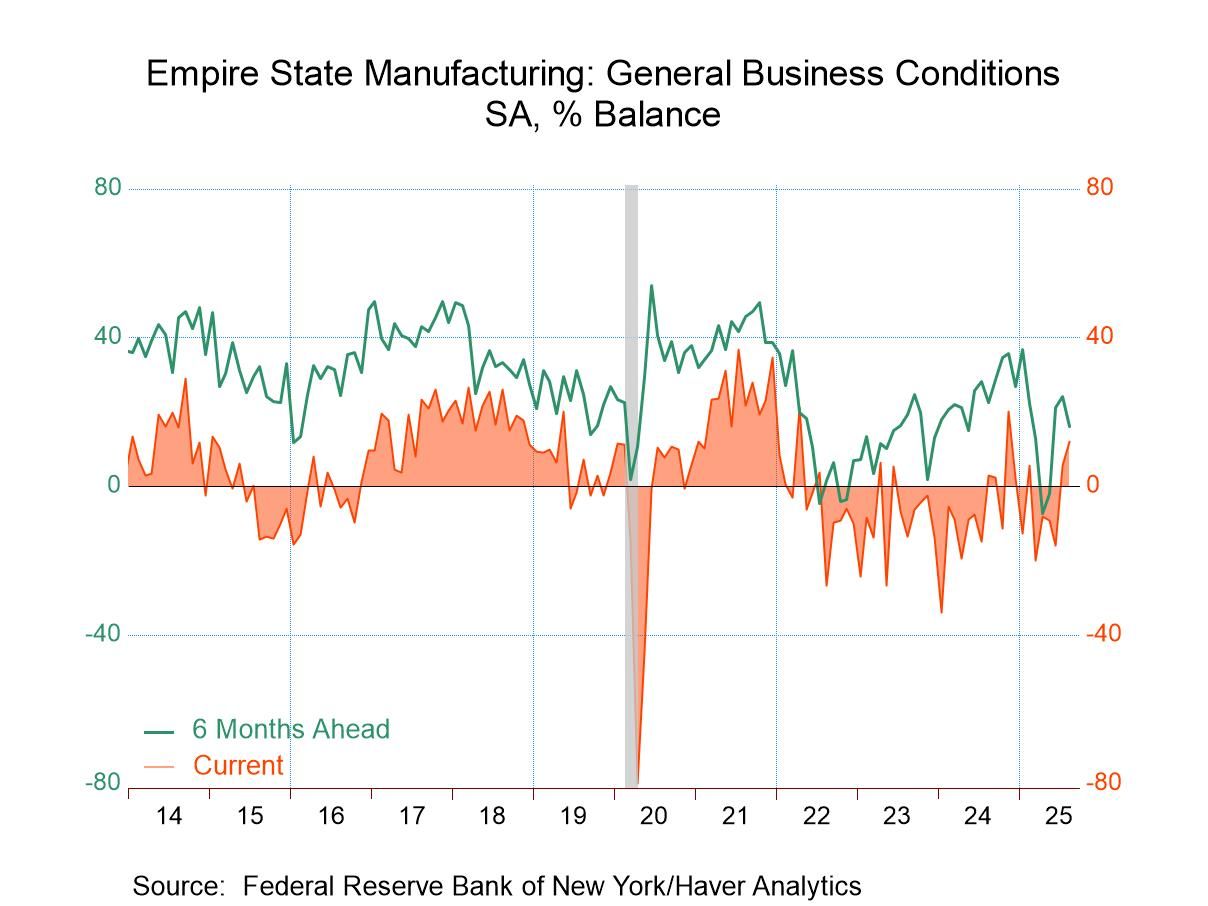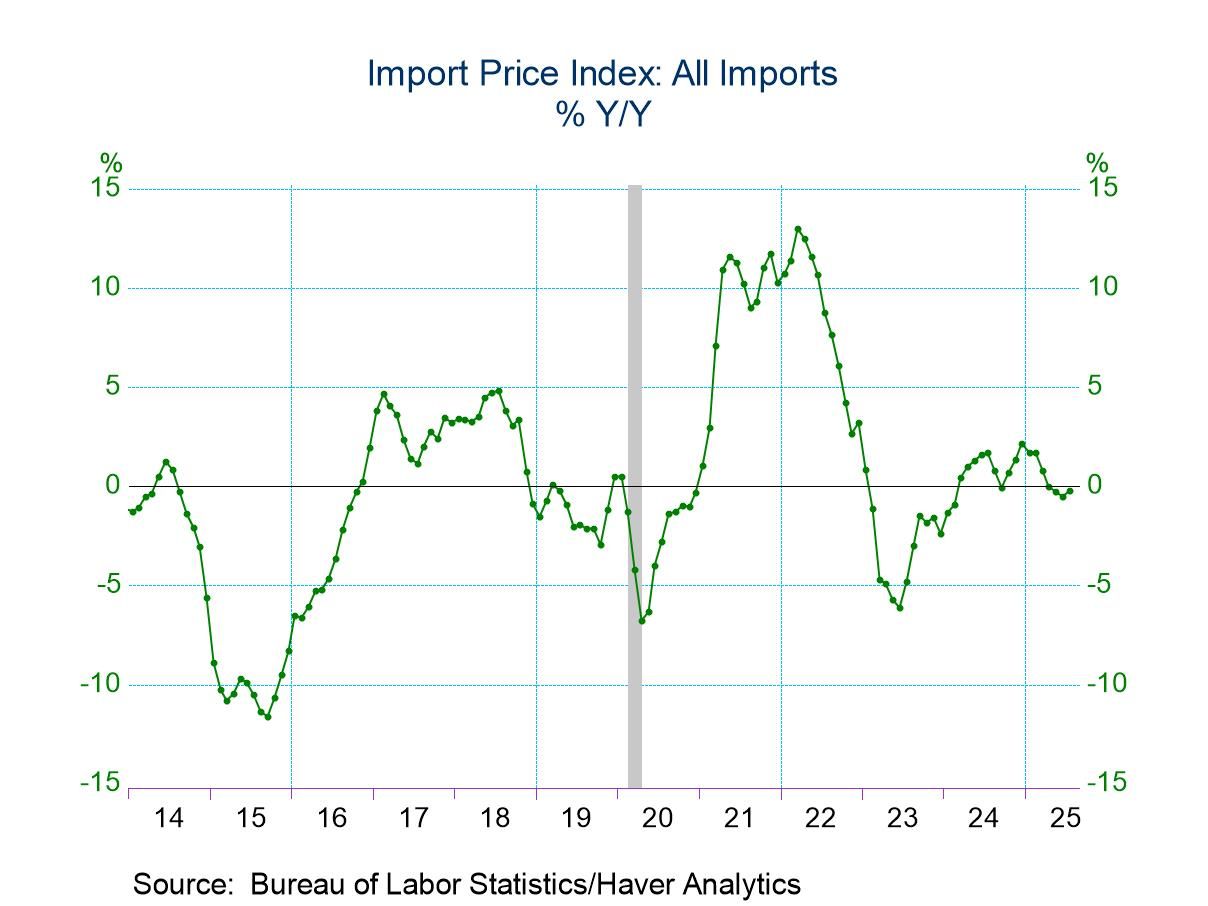 Global| Aug 11 2009
Global| Aug 11 2009U.S. Small Business OptimismWeakens Again As Hiring Intentions Remain Depressed
by:Tom Moeller
|in:Economy in Brief
Summary
Times may be improving, but small business' sense of that has sagged of late. The National Federation of Independent Business (NFIB) indicated that for the second consecutive month small business optimism slipped. The July decline [...]
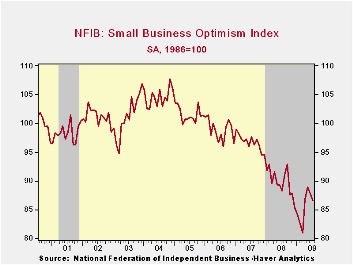 Times
may be improving, but small business' sense of that has sagged of late.
The National Federation of Independent Business (NFIB) indicated that
for the second consecutive month small business optimism slipped. The
July decline from June to an index level of 86.5 was to the lowest
level since March. Moreover, the latest figure was down slightly from
last year though it remained well improved from the lows of this past
winter.
Times
may be improving, but small business' sense of that has sagged of late.
The National Federation of Independent Business (NFIB) indicated that
for the second consecutive month small business optimism slipped. The
July decline from June to an index level of 86.5 was to the lowest
level since March. Moreover, the latest figure was down slightly from
last year though it remained well improved from the lows of this past
winter.
During the last ten years, there has been a 49% correlation between the level of the NFIB index and the two-quarter change in real GDP.
The percentage planning to raise employment remained slightly negative and the percentage with one or more job openings slipped to just 9%, nearly the lowest since 1982. During the last ten years there has been a 71% correlation between the NFIB employment percentage and the y/y change in nonfarm payrolls.
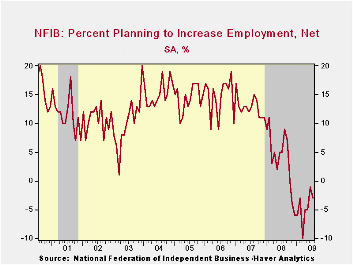 Driving
the cautious hiring was the falling percentage of small businesses
expecting the economy to improve, back to its lowest level since March.
The percentage expecting credit conditions to ease also remained in its
recent range while the percentage reporting that now is a good time to
expand business held in its modestly positive range of recent months.
Driving
the cautious hiring was the falling percentage of small businesses
expecting the economy to improve, back to its lowest level since March.
The percentage expecting credit conditions to ease also remained in its
recent range while the percentage reporting that now is a good time to
expand business held in its modestly positive range of recent months.
During the next 3-6 months, plans for capital spending also remained range-bound but modestly positive. This weakness in investment reflects not only diminished optimism about the economic outlook but poor profits. Forty-five percent of firms are reporting lower earnings this quarter versus last.
The largest, single most important problems seen by business were poor sales (32%), taxes (22%), government requirements (12%), insurance cost & availability (9%), competition from large businesses (5%) and inflation (3%).
The
percentage of firms planning to raise prices held
at 5% and that was near the record low. 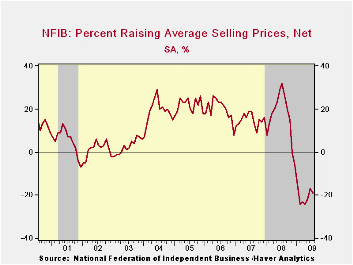 The
percentage of firms actually raising prices slipped
and remained in negative territory, near the record low.
During the last ten years there has been a 69% correlation between the
y/y change in the producer price index and the level of the NFIB price
index.
The
percentage of firms actually raising prices slipped
and remained in negative territory, near the record low.
During the last ten years there has been a 69% correlation between the
y/y change in the producer price index and the level of the NFIB price
index.
About 24 million small businesses exist in the United States. Small business creates 80% of all new jobs in America and the NFIB figures can be found in Haver's SURVEYS database.
Why Are Banks Holding So Many Excess Reserves? from the Federal Reserve Bank of New York can be found here.
| Nat'l Federation of Independent Business | July | June | Y/Y | 2008 | 2007 | 2006 |
|---|---|---|---|---|---|---|
| Small Business Optimism Index (SA, 1986=100) | 86.5 | 87.8 | -1.9% | 89.8 | 96.7 | 98.9 |
Tom Moeller
AuthorMore in Author Profile »Prior to joining Haver Analytics in 2000, Mr. Moeller worked as the Economist at Chancellor Capital Management from 1985 to 1999. There, he developed comprehensive economic forecasts and interpreted economic data for equity and fixed income portfolio managers. Also at Chancellor, Mr. Moeller worked as an equity analyst and was responsible for researching and rating companies in the economically sensitive automobile and housing industries for investment in Chancellor’s equity portfolio. Prior to joining Chancellor, Mr. Moeller was an Economist at Citibank from 1979 to 1984. He also analyzed pricing behavior in the metals industry for the Council on Wage and Price Stability in Washington, D.C. In 1999, Mr. Moeller received the award for most accurate forecast from the Forecasters' Club of New York. From 1990 to 1992 he was President of the New York Association for Business Economists. Mr. Moeller earned an M.B.A. in Finance from Fordham University, where he graduated in 1987. He holds a Bachelor of Arts in Economics from George Washington University.



